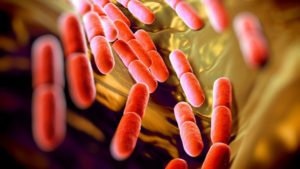Next Generation Probiotics
Probiotics Introduction
- Probiotics’ are naturally occurring bacterial strains found in human gut, and are being added to food for their health-promoting effects.
- The gut has a rich and diverse microbial ecosystem whose activities can also influence the health of the host.
- Probiotics have also been used to treat a variety of mucosal surface infections, such as those of the gut and vagina, but the use of these has almost diminished after antibiotics.
- The probiotics help in the production of antimicrobial metabolites and nutriceuticals; immunomodulation; relief of constipation and prevention of antibiotic-associated diarrhea; metal detoxification; serum cholesterol and blood pressure reduction; prevention and alleviation of allergic diseases; management of atopic dermatitis; prevention of surgical wound infection and tooth decay; regression of tumours and reduction in carcinogen and mutagen production
-
These are mostly used as food supplements and are now administered orally and are also an alternative to various intestinal disorders.
-
Lactic acid bacteria (LAB) have proved to be effective mucosal delivery vectors including Bifidobacterium and Lactobacillus
-
LAB has been altered by traditional and genetic engineering methods to yield new varieties.
-
These LAB can be genetically modified to get the desired protein or peptide without disturbing their biological activity.
- Other than that other bacterial and yeast strains such as Escherichia coli and Saccharomyces are also used as probiotic strains

Genetically Modified Probiotics/ Next Generation Probiotics
- The probiotics are genetically modified in order to get the desired or required protein or peptide for the biological activity or to enhance metabolism.
- Genetic modification of bacteria can be done by DNA transformation, transduction or by the use of plasmids
-
The regular consumption of fermented dairy products such as yoghurt containing lactic acid bacteria is associated with enhanced health and longevity in many people
-
The bacterial strains Bifidobacterium and Lactobacillus are considered as the most effective next-generation probiotic (NGP) and designer probiotics are also being recognized.
-
Probiotic strains with high potential and health benefits have been identified which include mainly from the genera Bacteroides, Akkermasia, Faecalibacterium and Eubacterium.
- Some of these strains have been recorded activating immune T cell immune response in vivo while some proposed IgA production
GMP in Food
- GMOs are produced from distant bacterial strains by introducing genes.
- For example, a heterologous catabolic glutamate dehydrogenase gene from Peptostreptococcus asaccharolyticus was introduced into L. lactis to produce a-ketoglutarate from glutamate which is an amino acid present at high levels in cheese
- Also L. lactis produce large amounts of L-alanine from pyruvate in a single step by alanine dehydrogenase. The carbon flux from pyruvate to alanine, the Bacillus sphaericus alanine
dehydrogenase gene (alaDH) was expressed in an L-lactate dehydrogenase-deficient lactococcal strain.
References
- https://www.researchgate.net/publication/265514231_Genetically_Engineered_Probiotics
- https://www.cell.com/trends/biotechnology/comments/S0167-7799(03)00251-8
- https://www.tandfonline.com/doi/full/10.1080/08910600510044480
- https://www.ncbi.nlm.nih.gov/pmc/articles/PMC6835687/
- https://www.ncbi.nlm.nih.gov/pmc/articles/PMC6973336/